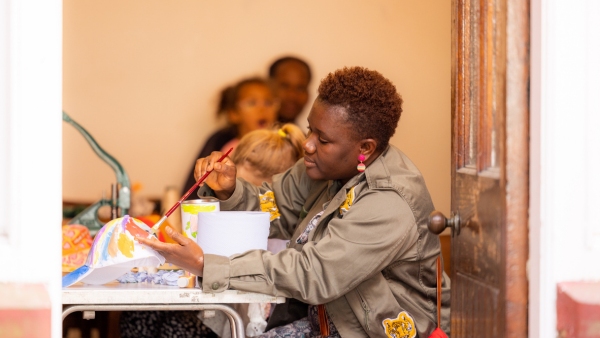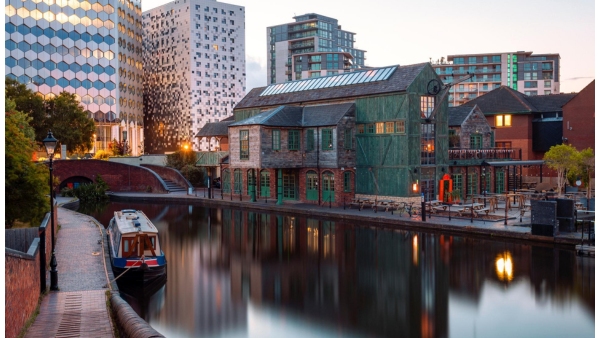A few recent conversations - including our recent RSA/Arts Council seminar series and a chat with Janet Morris, who is involved in the What Next? Southwark initiative among arts organisations - have coalesced in my thoughts.
The settlement for arts and heritage funding in the recent spending review could have been worse but not much worse. Even deeper reductions in local government funding (plus more years of council tax freeze) will mean local cuts for arts organisations on top of national ones.
While some local authorities - Bristol and Norwich, for example - see arts and culture as integral to their local economic strategy, beyond the small band of true believers can a case be made for the arts which goes beyond the passionate special pleading which we have heard so often? I think it can, but it will involve a major shift of thinking in the arts sector itself.
Looking at overall cuts in council spending of up to a third, alongside rising needs and a sluggish economy, it is clear that unless local leaders think and act very differently, they face managing a major decline in both service standards and the quality of the public domain.
The new form of local leadership required involves a number of elements:
- The development and articulation of an ambitious, distinctive and achievable vision.
- The bringing together of the key local actors from the public, private, civic and third sector and the inculcation of a deep and authentic commitment to collaboration (which, to mean anything, must involve a willingness to make short term sacrifices in individual organisations in pursuit of shared goals).
- A rich engagement with the broader public, including identifying and winning buy in for actions local citizens can contribute to the place's prospects (for an example of this see the Mayor of Oklahoma).
'Vision', 'collaboration' and 'public engagement' are all the kind of warm words that tend to get attached to various local coordinating bodies, like, for example, the Local Strategic Partnerships set up by the last Labour Government. But the harsh reality is that these bodies tend to be little more than committees which organisations either treat with disdain or through which they steadfastly pursue their own bureaucratic self-interest.
How can rhetorical commitments to new forms of leadership, innovative practice and generous collaboration turn into something real? This is where arts organisations can come in. Their ethos, their method, their creativity can act as the catalyst for new ways of being and thinking. This is something we saw happen when we helped bring arts practice and method to the local coordination body in Peterborough as part of our Citizen Power project (final report forthcoming).
The question thus changes: instead of 'how can we persuade the authorities (and local people) to protect the arts in tough times?' it becomes 'how can we be prime movers in enabling our place not only to survive but to prosper in these difficult times?'.
For arts organisations to make this offer and make it credibly they will need to examine their own ways of working. They will in essence need to see themselves as commissioned by the places, in which they are based, a concept which, if taken seriously, is complex and challenging.
To act as place catalysts will involve developing a nuanced and grounded understanding of their locality, its people, its needs and its challenges. It will mean fending off those - and this will include some of its traditional allies - who see such an idea as instrumental or parochial. And it will involve the organisations showing how successful engagement in place leadership depends on being able also to create art and culture of intrinsic merit.
I suspect many arts organisations would claim already to be catalysts for local change just as many organisations claim to subsume their interest to the broader good of their locality, but such claims are hollow unless they are manifested in a genuine commitment to self-examination and reorientation.
It won't be easy but 'place commissioning' may be the way for the local case for arts funding to be less bleeding stump and more bleeding edge.
Related articles
-
Open RSA knowledge standards
Alessandra Tombazzi Tom Kenyon
After investigating ‘knowledge commons’, we're introducing our open RSA standards and what they mean for our practice, products and processes.
-
RSA Catalyst Awards 2023: winners announced
Alexandra Brown
Learn about the 11 exciting innovation projects receiving RSA Catalyst funding in our 2023 awards.
-
Investment for inclusive and sustainable growth in cities
Anna Valero
Anna Valero highlights a decisive decade for addressing the UK’s longstanding productivity problems, large and persistent inequalities across and within regions, and delivering on net zero commitments.




Be the first to write a comment
Comments
Please login to post a comment or reply
Don't have an account? Click here to register.